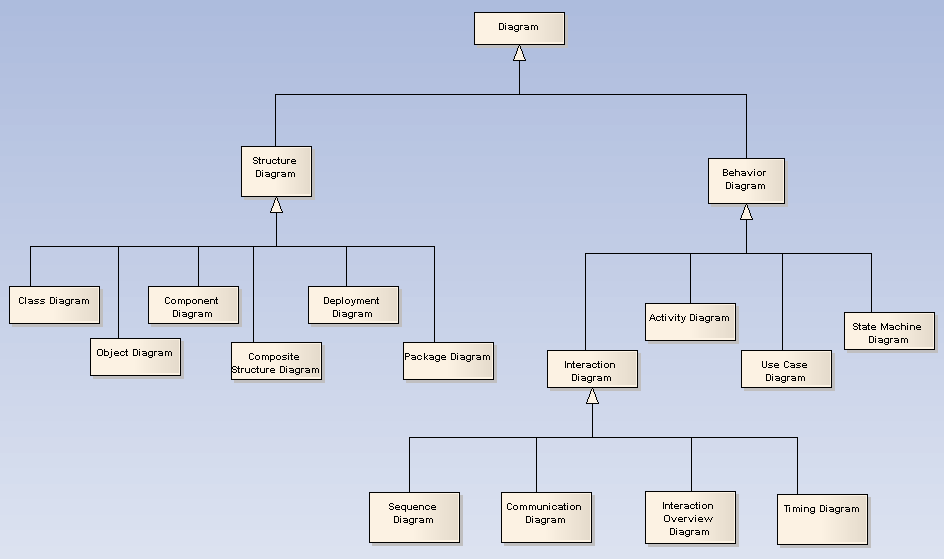Types of Diagram
There are two major groupings of UML diagrams: Structural diagrams, which show a static view of the model; and Behavioral diagrams, which show a dynamic view of the model. For more information on building these diagrams, click on the following links:
The figure below shows the taxonomy of the 13 UML diagrams, as defined by the Object Development Group's UML 2.1 specification. Enterprise Architect provides additional diagram types that extend the core UML diagrams for business process modeling, formal requirements specifications and other domain-specific models. It also supports diagram types specific to MDG Technologies such as MindMapping.

See UML Superstructure Specification, v2.0, figure 464, p. 590.
Enterprise Architect provides the following Extended diagrams:
| · | Analysis diagrams |
| · | Custom diagrams |
| · | Requirements diagrams |
| · | Maintenance diagrams |
| · | User Interface diagrams |
| · | Database diagrams |
| · | Robustness diagrams. |
Working with Diagrams
Diagrams are developed in the main workspace in which you create and connect model elements. You create them by right-clicking a package and selecting the New Diagram context menu option, or load them by double-clicking their diagram icon in the Project Browser window. For full details on how to work with diagrams, see Diagram Tasks.


